The Truth behind a Jar of Tomato Sauce
I absolutely love preserving. Any kind of preserving.
I pickle and ferment, cook jams and cordials, sugo and sauces - like the one of oven roasted tomatoes I made and am sharing the recipe and photos here.
I don't do all of this just because I love to snack on vinegary pink boiled eggs and crunchy kimchi, or because I like to spread fruity-sweet marmalade on thickly buttered bread and perk up my club soda with elderflower sirup. And even though I do prefer house made ketchup and pasta sauce over store bought one, the true reasons I prepare my own lie deeper.
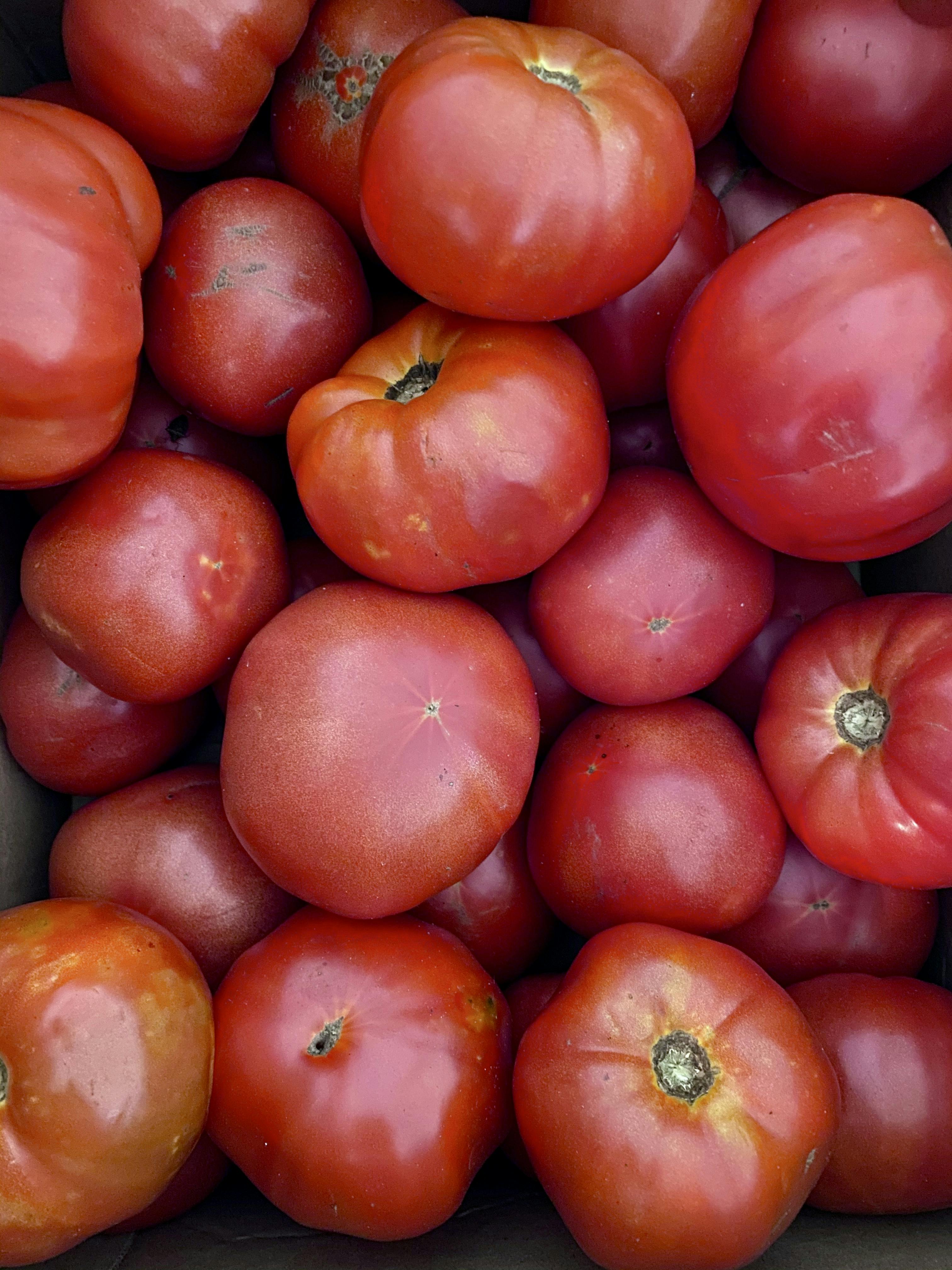
It's usually when there's not only abundance but even excess of a seasonal product when I decide to make preserves. It's when specific fruits and vegetables are at their peak flavor and quality wise and at their lowest price wise. It's when one can get a whole bunch for almost nothing.
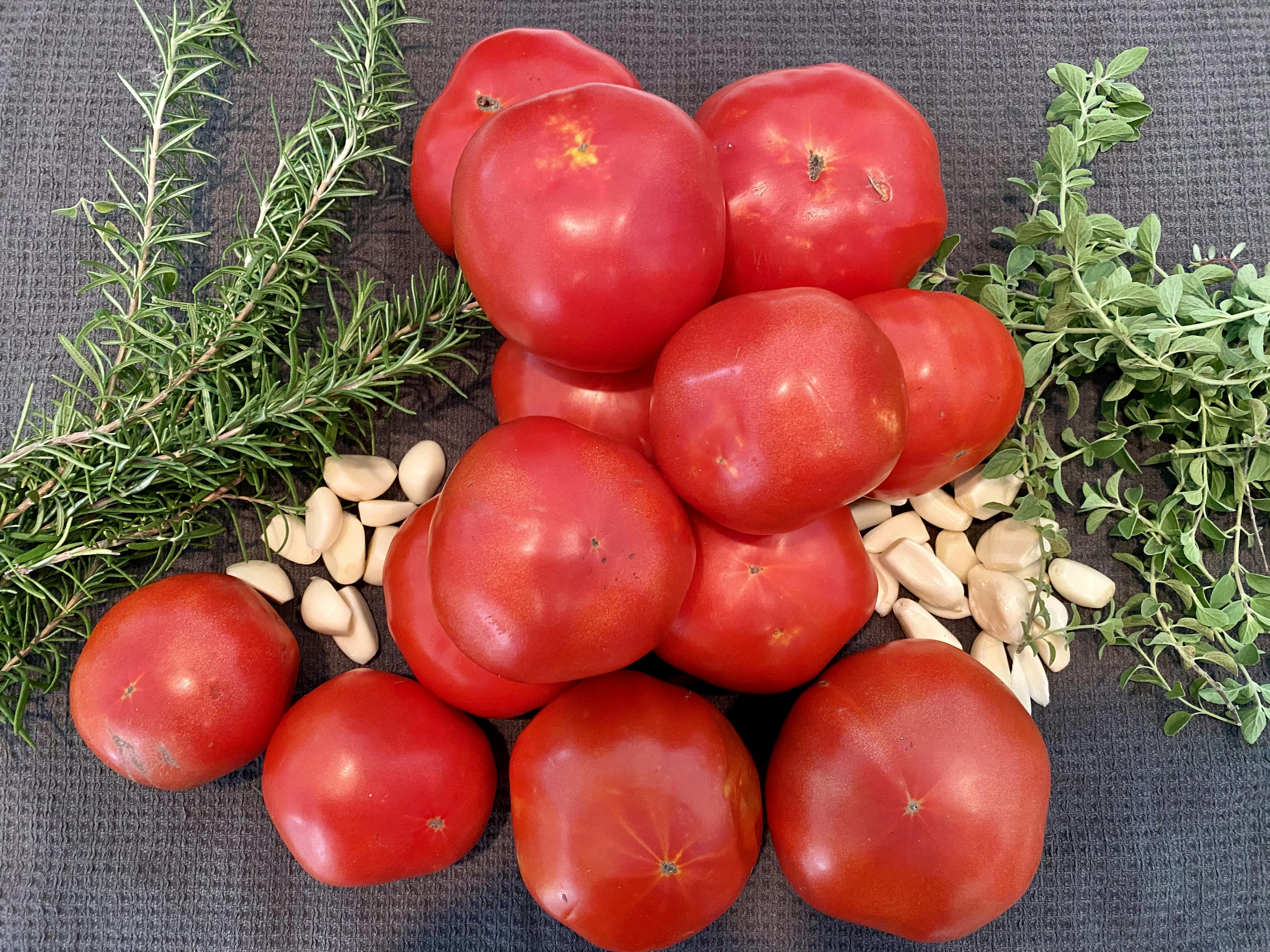
I never only make one batch, or two, three jars of what ever. It's always a lot that I make. Meaning that there is repetition. Repeated washing, cleaning, peeling, chopping, draining, straining, stirring, preparing of vessels. Repeated waiting for certain temperatures or textures or times. Repeated ladling and labeling.
Constant repetition has an emotional effect. And when it happens in my kitchen this effect is the very same as the one when I listen to the rain outside: It is enormously calming. Doing the same thing over and over leads to a rhythm that makes me forget time and dimensions and the world. I am caught in what I am repeatedly doing, and in this only. While my hands keep on doing a certain move my thoughts wander wide and deep.
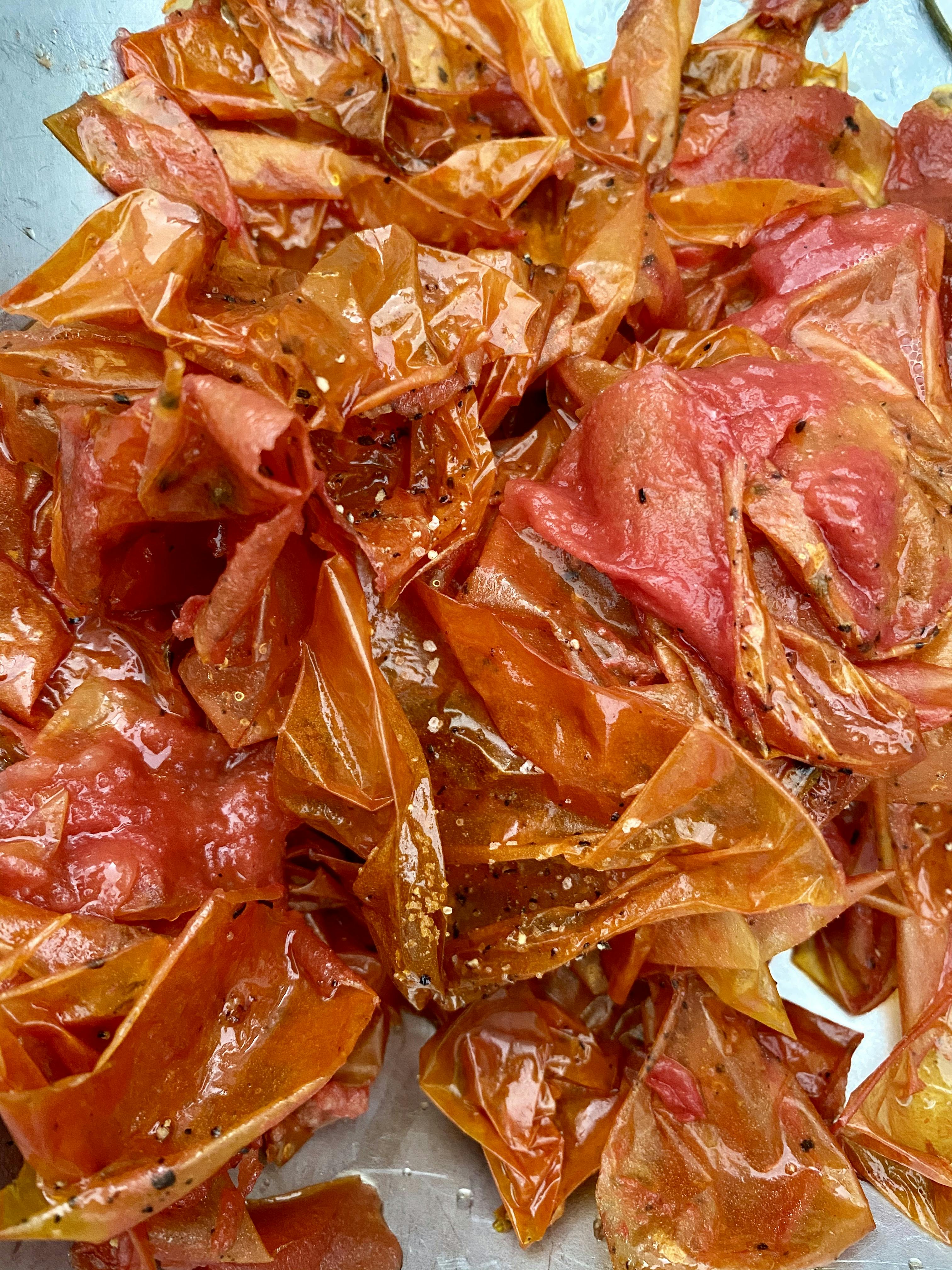
The act of preserving to me is therapy. It's unplugging from the outside world and diving into a river which's current will take me to an unknown place.
But the act is more than just an act: It is a project. Because there is a whole lot of product that I decided to transform into a state that's a little closer to its eternality. So I do prepare myself for the project not just physically - in the form of a smart mise-en-place - but also emotionally: Like with any challenge - running a marathon, mastering the violin or winning a chess game - I know that there will be pain. Sometimes on and off, sometimes for a long duration and sometimes only just before the end. But pain there always is.
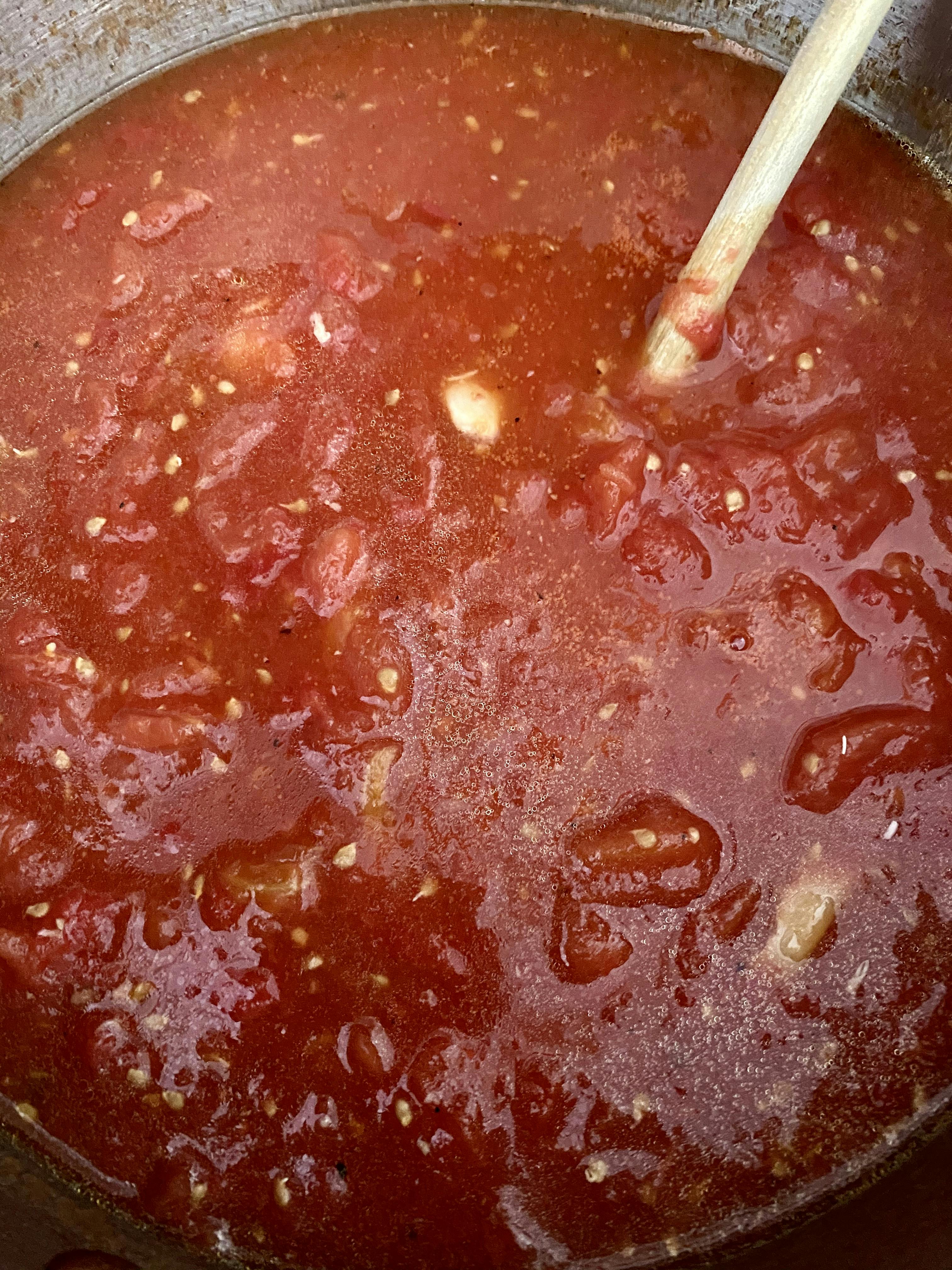
Everyone who has gone through batches and more batches and seemingly endless batches of what ever is in season knows the tiredness and the moments of misbelief. The questions of doubt and, at times, even anger.
But everyone who is familiar with the act of preserving also exactly knows the big moment of relief. When everything has been finished, all peaches have become jelly and all cucumbers pickles, when all the pots are cleaned, all the stains removed. The moment when we look at the rows of jars or bottles, standing on the counter like precious trophies, reminding us of our hard work. Oh, and that truly glorious moment when the first lid pops!
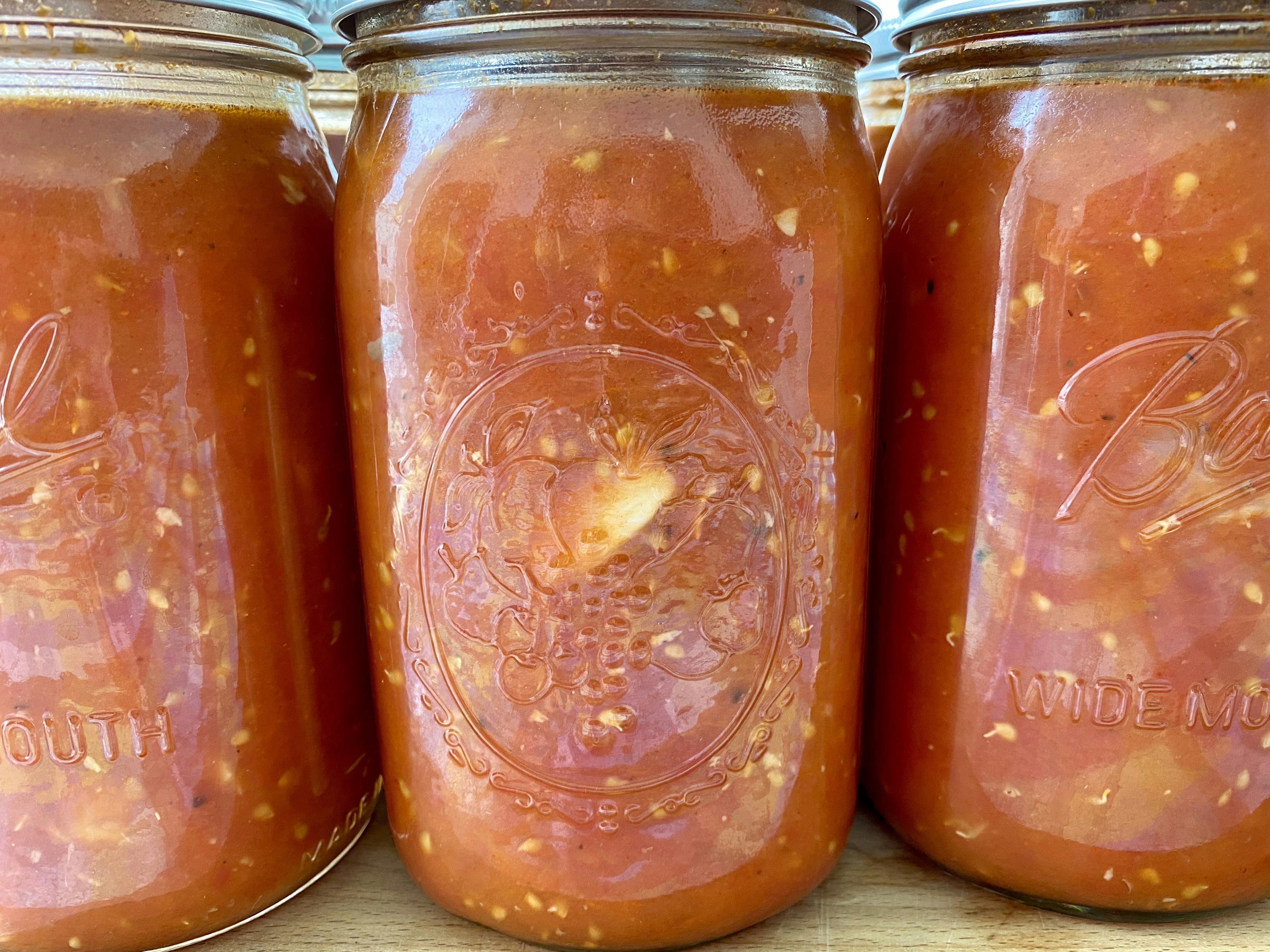
Those bottles and jars also nurture my mother instinct: They make me feel safe, make me believe that I am ready to take on the world, or the ones who need food. They make me believe, at least for a short time, that I am prepared. - Even if it only is for the next craving.

Oven Roasted Tomato Sauce
Ingredients
- 20 lb Tomatoes
- 2 bulbs Garlic (can be more, less or none at all)
- 10 twigs fresh Rosemary
- 10 twigs fresh Lemonthyme
- Olive Oil
- Salt and freshly ground Black Pepper to taste
- 8 quart sized Mason Jars
Instructions
Wash the tomatoes. Peel the garlic, cut cloves in half. Clean the herbs.
Cut the tomatoes in halves, remove the stem ends.
Preheat oven to 450 degrees.
Line a baking sheet with parchment paper and generously cover with olive oil.
Turn each tomato half in the oil so it is completely covered, and put on the sheet cut side down. Disburse the garlic and herbs between the tomatoes. Season with salt and pepper.
Roast tomatoes in the oven for about 45 minutes or until skin starts to brown and wrinkle.
Remove from the oven and let cool off a little bit. Then, with a sharp knife, remove the tomato skins.
Pick out the herbs and put them into a little bouquet garni bag. Put this into a heavy, large sauce pan.
Transfer the tomatoes, garlic and all the juices on the baking sheet into the pan.
Turn heat to high and bring the mix to a boil. Reduce temperature. Simmer the sauce, stirring and smashing the tomatoes and garlic cloves regularly, for about 45 minutes. Add salt and pepper to taste.
Fill another large pot with water, cover, and bring to a boil.
In the mean time fill the clean jars until one finger width underneath the rim. This works best when using an expandable wide mouth funnel. When done, close the jars.
Put as many jars as fit into the pot, making sure the water reaches the lids. Cook the sauce in the jars for 30-45 minutes. Remove them from the water, dry and let cool.
You can adjust the proportions according to the amount of tomatoes you are working with. You also can use other herbs, or no herbs and garlic at all. If you don't like seeds in your sauce go ahead and remove them before rubbing the tomato halves with oil and putting them on the sheet pan. If you prefer a smooth to a chunky sauce use an immersion blender at the beginning of the cooking process.


